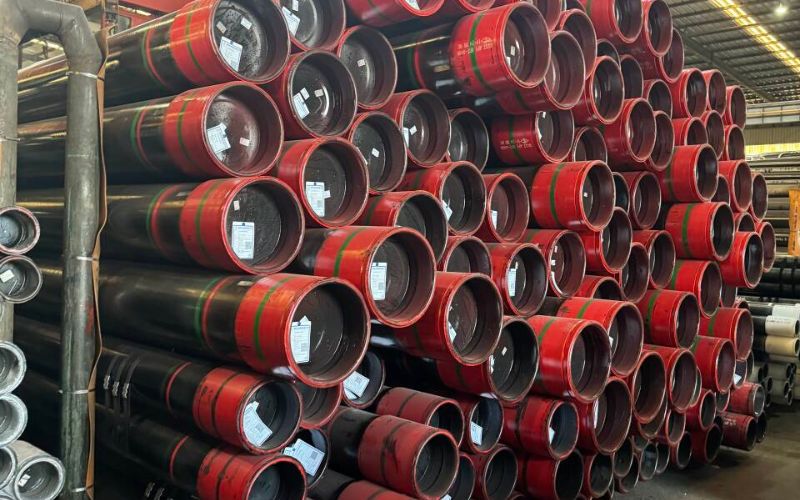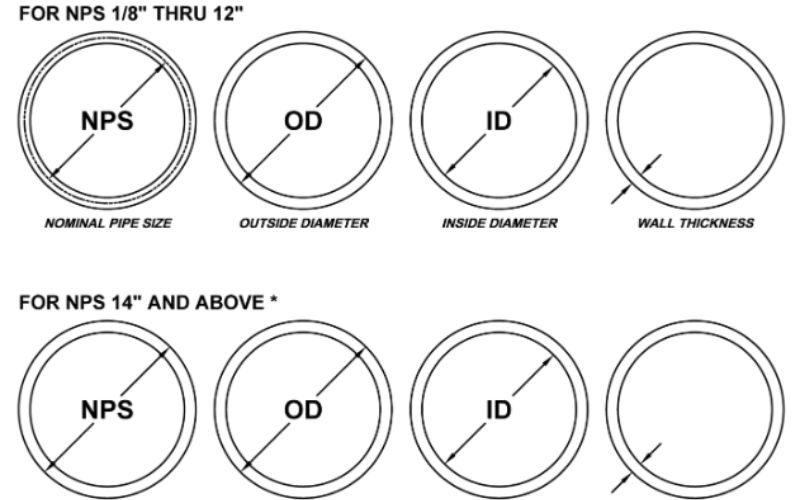There are many types of materials used for construction and residential piping, but none have become more popular due to their affordability, strength, and adaptability than the Schedule 40 black pipe. Whether you are a professional contractor or enjoy fixing things around the house and working on plumbing, understanding this type of pipe and its most common applications is imperative. This article will discuss the features that make Schedule 40 black pipe preferable to others in construction and other applications. Strength, thickness, and applicability to projects, including the transportation of gas or the creation of structures, will be discussed, which is why this option is reliable in the world of industries. At the end of this article, you will appreciate how Schedule 40 black pipe is exactly what you need for the project that you have in mind.
Introduction to Schedule 40 Black Pipe
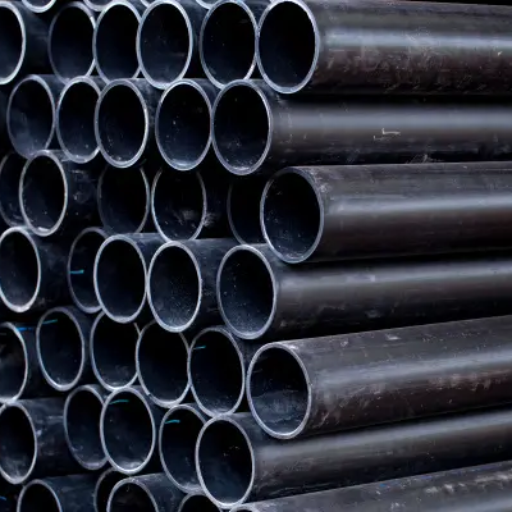
A schedule 40 black pipe is a popular steel pipe type favored for numerous good reasons, including its longevity and usability. The pipe is crafted with the standard wall thickness, which maximizes both cost and strength factors, making it suitable for most applications. Such pipes are most commonly used in conveying fluids or gases or providing basic support structures in building works. It’s resistant to corrosion and can handle a wide range of pressure improvement, making it a reputable choice in ecology and many other sectors.
What is Schedule 40 Black Pipe?
Schedule 40 Black pipes are made of steel and are used widely in construction, plumbing and other industries for their strong and durable nature. The thickness of the pipe is described by the term ‘schedule 40’, which indicates that the pipe has optimum strength for the minimum cost. This type of black pipe, which is provided with an oxide coating to prevent rust, is typically used for conveying gas, oil, and water in non-high-pressure systems. Additionally, it also finds use in HVAC systems and for ornamental purposes, such as constructing industrial-style furniture. It is pretty standard and flexible, making it suitable for various industries.
History and Development of Black Steel Pipe
During the 19th century, with the advent of the industrial era, black steel pipe came in existence because of the advancements in the unique metallurgy and industry. The steel pipes manufactured during that time were intended to maintain water and gas systems that were robust enough for the growing urban centers. Owing to methods such as the Bessemer process, steel production was improved, and this included black steel pipes, which were now used across many sectors. However, the introduced material over the years became very strong, albeit affordable, and the black pipe, as it came to be known because of its blatant use to resist corrosion, also adapted to modern architectural and design processes. Owning to the bustling of this age, steel became less exalting and the new material was all ready dense a composition hypo-tonic, nevertheless, equally strong and inaffordable. As it stands today, black steel pipe is the pillar of the construction, plumbing, and energy sectors and even finds its way into the world of art.
Key Specifications of Schedule 40 Black Pipe
- Material Construction: Constructed using carbon steel, which adds to the long-lasting qualities of the object.
- Wall Thickness: The walls have a specified thickness that is in line with schedule 40 black pipe that can withstand medium levels pressure.
- Corrosion Protection: Covered with black-oxide to prevent rusting and thus prolong the service use of the pipe.
- Definite range of sizes: It is available in all range of diameters so as to suit a variety of projects.
- Pressure Classification: Suitable for residential, commercial, and industrial medium-pressure applications.
- Length: They are typically provided in standard lengths, although they can also be supplied in longer lengths or cut to size to meet the user’s requirements.
- Capacity to Join: Excellent weldability which allows easy operations during installation and manufacture.
- Resistance to Temperature: It can operate within the normal temperature range and even high temperatures.
- Type of Pipes: It is possible to obtain free ends, blunt ends, or even with threads and different couplings of the above.
- Applications: Normally see applications in gas lines, fire sprinkler systems, water distribution, and structure supports.
Specifications of Schedule 40 Black Pipe
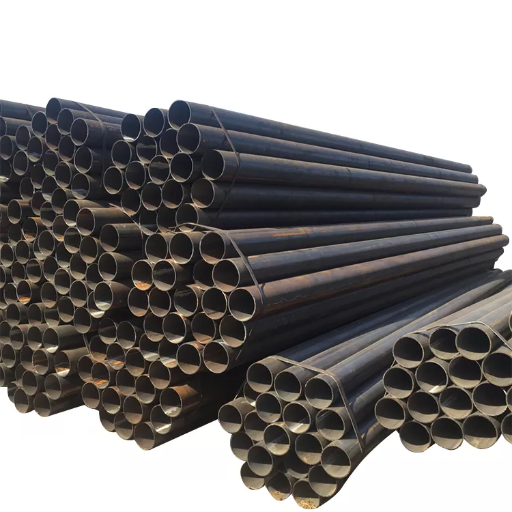
Dimensions: Length and Diameter
Commonly used schedule 40 black pipe is produced in various lengths of up to 5m or 6.6m according to intended purposes. Their outer diameter depends on the size of the pipe, from. 375 inches (1/8 nominal pipe size) to more than 24 inches for large applications. For any given pipe size, the wall thickness is not uniform, increasing as the diameter of the pipe rises to ensure the pressure rating and robustness of the pipe. This dimension range also facilitates the use of schedule 40 black pipe in various circumstances, including domestic installations. Measure with caution and always refer to detailed product specifications or made-up literature where applicable.
Nominal vs. Actual Sizes of Schedule 40 Pipe
Nominal sizes of Schedule 40 pipes range from 1/8 inch to over 24 inches, while actual sizes vary slightly depending on the pipe’s diameter and wall thickness.
| Nominal Size | Actual OD | Wall Thick. | Inside Dia. |
|---|---|---|---|
| 1/8 inch | 0.405 inch | 0.068 inch | 0.269 inch |
| 1/4 inch | 0.540 inch | 0.088 inch | 0.364 inch |
| 1/2 inch | 0.840 inch | 0.109 inch | 0.622 inch |
| 3/4 inch | 1.050 inch | 0.113 inch | 0.824 inch |
| 1 inch | 1.315 inch | 0.133 inch | 1.049 inch |
| 1 1/2 inch | 1.900 inch | 0.145 inch | 1.610 inch |
| 2 inch | 2.375 inch | 0.154 inch | 2.067 inch |
| 6 inch | 6.625 inch | 0.280 inch | 6.065 inch |
| 12 inch | 12.750 inch | 0.375 inch | 11.994 inch |
Material Composition: Carbon Steel Properties
When discussing Schedule 40 black pipe, we primarily refer to a carbon steel alloy composed of iron and carbon. The carbon content typically ranges from 0.05% to 0.30%, providing both reasonable strength and ductility. This material is very durable, resistant to wear, and capable of containing high pressure, hence popular in numerous plumbing, structural and industrial fittings and fabrications. In addition to these qualities, it is flexible, enabling it to be readily subjected to processes such as cutting, welding, and shaping for different purposes.
Applications of Schedule 40 Black Pipe
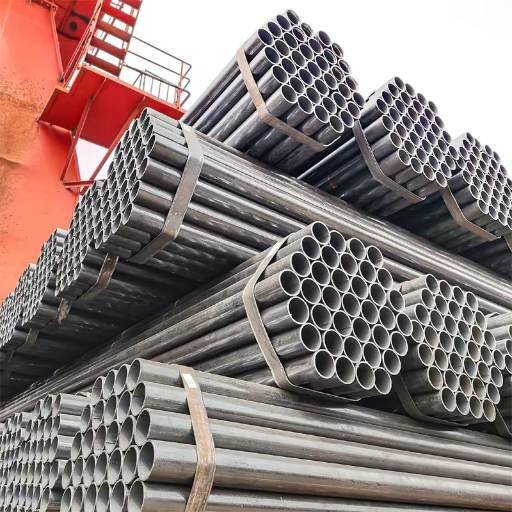
- ✓Plumbing Applications: This is catered for residents, commercial and industrialized plumbing applications due to its strength of withstanding pressure.
- ✓Support Beams: Generally, support beams in carpets and other structures, such as stairs, are used to reinforce the overall structure.
- ✓Irrigation: Is most suitable in areas such as agriculture and landscape designs that require long-lasting and wear-resistant systems.
- ✓Industrial Usage: This may result in the use Volatile Liquid Product for transmitting steam, compressed air or any other commercial liquids at a below average pressure.
- ✓Accessories: Some schedule 40 black pipe can be transformed into a functional yet all the same, BEAUTY and Welch respectively as well as other reclaimables.
When to Choose Schedule 40 over Alternatives
You may rely on schedule 40 when you require enough strength and reliability which would not significantly trim your budget. It is best installed in mild pressurized or temperature conditions, e.g., any town’s plumbing system, irrigation systems and light industries. Stainless schedule 40 is also not scarce compared to other metallic materials, and an individual can easily carry its weight while relying on nothing but such lighter materials. Uses that do not require the high-pressure and temperature endurance of Schedule 80 black pipes can be satisfied with Schedule 40 black pipe.
Residential Uses of Black Steel Pipe
One of the most widely used piping for residential constructions is black steel pipe due to its strength and wide range of applications. A widespread application is the use of this pipe for gas lines as it can be used to transport natural gas or propane over large distances without any possible losses. There are also cases where the black steel pipe is used in sprinklers in buildings due to its high-pressure and heat-resistant capabilities. Due to its sturdiness it is also feasible to use it for supporting structures without fear of it bending under the pressure. Although it corrodes in water, it is still used indoors as long as there isn’t much contact with water. schedule 40 black pipe would be one example of a pipe that is easy to find and use indoors.
Industrial Applications of Schedule 40 Pipe
Schedule 40 pipe is one such type of pipe that is seen in the majority of industrial processes because of its toughness, versatile nature and ability to bear heavy pressures and temperatures. Some of its standard functions include plumbing in water and gas supply/ distribution systems, where fluid conveyance is achieved without the potential of breakdown or leakage. It is also used extensively in the construction of foundations and frames, machine bases, and conveyor belts in factories. It can be welded or threaded making it appropriate for any structural application which requires modification. Other usages of schedule 40 black pipe include fields such as agriculture using sprinklers, petroleum and gas line, and industrial process related to chemicals and gas transfer systems at acceptable levels of pressure. This straightforward pipe, however, finds its numerous applications in industrial conditions for quite an understandable reason.
Installation and Usage Tips for Schedule 40 Black Pipe
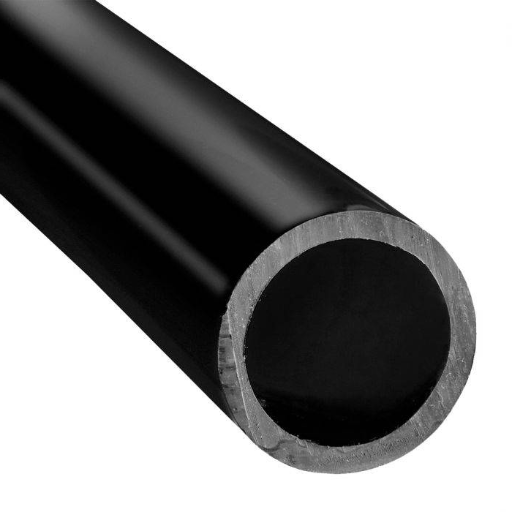
- Measure and Plan: Collect mean measurements and layout plan for piping in a manner that ensures ease of installation and reduces waste of materials.
- Cutting and Threading: Utilize the cutting and threading devices for making pipe ready for making connections. The threads should be free from impurities or debris, ensuring a tight attachment.
- Install the Right Fittings: Use the proper pipe joint fittings to connect the pipes. The ideal fitting is one that accurately fits the pipe size, providing a secure and seamless system.
- Connection Sealing: Impose pipe thread compound or teflon tape to all threaded fittings, so that they won’t leak during operation.
- Secure the Pipe or Install Support: Provide sufficient support or hanging points for the pipe to prevent excessive load on the joints and ensure stability, especially for long pipe lengths.
- Check for Leaks: After the fitting operations, operate the system at working pressure and observe for any leaks or weaknesses.
- Be Safety Conscious: Adhere strictly to safety precautions and avoid any situation that may lead to injuries by using safety equipment during the fitting and servicing.
Preparation and Tools Required for Installation
Every success for Schedule 40 black-set pipe installation begins with having the right preparation and tools. Prepare all materials and tools before starting, so everything is within reach. Here are the important ones:
To measure and mark the exact length of pipe needed in a corresponding installation.
To make cuts in black pipe to fit with accurate edges.
If threading of pipes is required, then proper threading tools or a machine for accurate threads will be required.
To tighten the connections in securing and fastening the pipes.
Available elbows, tees, couplings, and various fittings depending on the piping configuration.
To allow for airtight and leak-proof joints in the threaded connections.
To verify that pipes are installed straight and aligned correctly.
These include gloves, safety glasses, and work boots that ensure safety throughout the installation works.
To provide stability to a piping system, especially when working with long or suspended sections.
Used to check for leaks and verify the integrity of connections post-installation.
Important Note: Properly preparing the workspace, clearing clutter, and organizing the tools beforehand will contribute enormously to ensuring that the installation works become efficient and safer.
How to Cut and Thread 40 Black Pipe
To cut schedule 40 black pipe and thread it, the first thing I do is take a measurement using a tape measure and then a mark is made at the desired length by a marker. After this is done, clean and neat cuts are made either using a pipe cutter or a sawzall. The pipe is then held with a pipe vise to prevent any movements and a threader is attached to the end of the pipe. A smooth application of the threader and frequent application of a cutting oil makes it possible to generate nice and even threads. Upon winding the thread, it is checked for consistency and edges are deburred where necessary to allow smooth installation.
Common Mistakes to Avoid During Installation
- ❌ Skipping Correct Dimension: Inappropriate pipe fitting due to failure to measure properly causes leaks and misalignment. Measure twice and cut once or thread.
- ❌ Use of Inappropriate Equipment: Pipe or thread breakage will occur due to using inappropriate tools. Have the proper pipe cutter, threader or any other tools required at the site.
- ❌ Forgetful of Cutting Oil: It is also not advisable to conduct threading without the application of cutting oil. This will result in uneven threads, which will make the pipe less durable because of the high level of wear and tear.
- ❌ Wrong Clamping of Pipe: if the pipe is not clamped adequately to a vise it causes a cut that is not uniform or threads that are not consistent which affects the overall fitment.
- ❌ Skipping Thread Checking: Putting pipes without first checking that the threads are even may result in inefficient joints and leaks at the connection point. Threads should be checked for burrs and de-burred once they are in place.
Advantages and Disadvantages of Using Schedule 40 Black Pipe
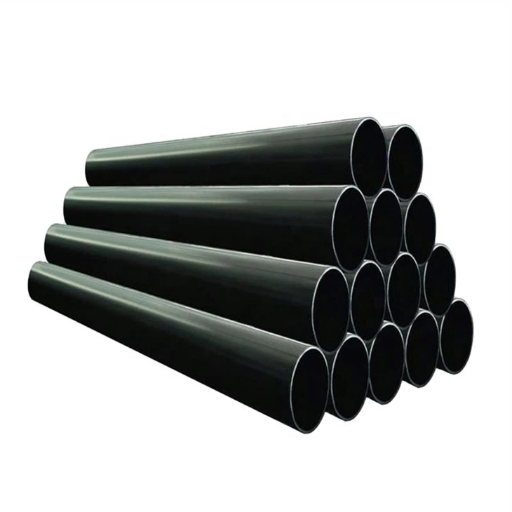
Benefits of Using Steel Black Pipe in Projects
- Resilience: Schedule 40 black pipes, made of steel, are highly durable as they can withstand harsh or complex conditions and are therefore suitable for building constructions and other heavy-duty tasks.
- Rusting Resistance: The outer surface coating is effective in areas where rusting can occur, such as indoors.
- Economical: When compared to other products, steel black pipes can be used economically, as they do not compromise on quality or efficiency.
- Applicability: Such pipes are particularly useful when there is a need for lines such as those for gas, water, and even electrical frameworks.
- Heat Resilience: A key feature of steel black pipes is their ability to remain functional under high temperatures, which is particularly beneficial for machines that operate in hot environments.
Limitations and Potential Issues with Black Pipe
- Susceptible to Corrosion: As steel black pipes get corroded in moist or reactive conditions, they cannot be used outdoors or underground without a treatment.
- Water Transport Limitation: It is not advisable to use black pipes for drinking water due to the accumulation of rust.
- High Weight: Steel black pipes are heavy for the handlers or even installers which becomes laborious when putting up a large project.
- Ease of Sufferance: The black pipes surface is easy to scratch which might make its protection ineffective and lead to corrosion of the pipe.
- Flexible Design: It is difficult for black steel pipes to bend as they are rigid, thus they cannot be used on areas with curves or bends.
Schedule 40 Black Pipe vs. Other Piping Materials
Schedule 40 black pipe differs from other piping materials like PVC, copper, stainless steel, and PEX in terms of strength, corrosion resistance, cost, flexibility, and applications.
| Parameter | Black Pipe | PVC | Copper | Stainless | PEX |
|---|---|---|---|---|---|
| Strength | High | Low | Moderate | High | Moderate |
| Corrosion Res. | Low | High | Moderate | High | High |
| Cost | Low | Low | High | High | Moderate |
| Flexibility | Low | High | Low | Low | High |
| Applications | Gas/Water | Drainage | Water/Gas | Food/Med | Plumbing |
Reference Sources
-
Amardeep Steel – Schedule 40 Steel Pipe: Offers specifications like yield strength, tensile strength, and dimensions.
-
Oil and Gas Piping Materials – Black Steel Pipe Schedule 40: Includes specifications such as finish, nominal pipe size, and length.
-
HU Steel – Schedule 40 Black Steel Pipe: Discusses the American Standard Wall Thickness Classification and surface properties.
-
Competitive Metals – Schedule 40 Black Pipe: Provides details on pressure applications, water lines, gas lines, and mechanical uses.
- Black Steel Pipe Supplier In China
Frequently Asked Questions (FAQs)
What exactly is black pipe that comes from schedule 40 and what is it used for?
Schedule 40 black pipe is typically used in building and plumbing applications. The black pipe is made of carbon steel and designed explicitly for schedule 40 standard. It features a lubricated surface and is available in various sizes and thicknesses to accommodate different pressures. The rigid nature of black pipes allows them to safely carry materials like water, gasoline, and gases without much of a difficulty inside homes or structures and even when they are outside.
What dimensions will the schedule 40 black pipe come in?
The outer diameter of a black pipe in Schedule 40 ranges from approximately ½ inch to two feet. Because these pipes come in specific standard sizes, the specified size determines the inner and outer diameters of the pipes to be used in the given application.
How much does a schedule 40 black pipe cost?
The cost of schedule 40 black pipe is dependent on the size, length, and the vendor. They generally span from a couple of dollars per foot for small pipes to much higher rates for large ones. Ensure to confirm the most recent prices from the preferred sources as they may vary.
What are the Features of schedule 40 black pipe?
The materials that constitute Schedule 40 Black pipe are designed to provide both strength and adaptability. The end is flush, eliminating any burrs or sharp edges, and is corrosion-resistant, making it suitable for both domestic and commercial purposes. It is also widely applied in areas of an electromechanical nature as it seeks to fill in all these sectors.
What considerations should I keep in mind while planning the length of schedule 40 black pipe that is needed for the project?
Measure the distances between each connection to determine the number of lengths of Schedule 40 black pipe needed, and also consider any bends or curves that may reduce the total length required. It is recommended that one purchases some spare lengths to make corrections where there are unavoidable miscalculations or changes.
Can one use Schedule 40 Black Pipe for Natural gas?
Indeed, schedule 40 black pipe is applicable for gas lines. The pressure retaining properties and strong material makes it suitable for natural gas as well as propane distribution in houses and other utility pipelines.



